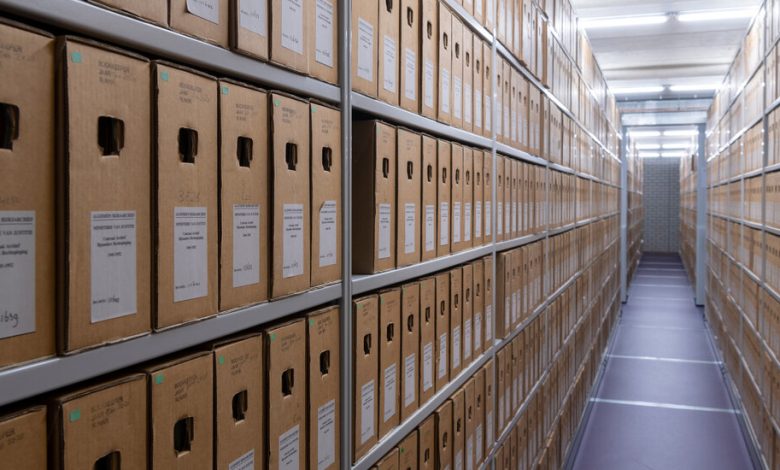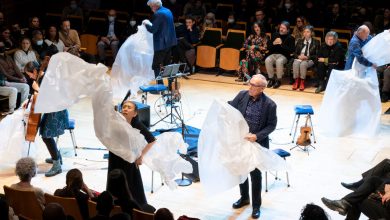Dutch to Make Public the Files on Accused Nazi Collaborators

AMSTERDAM — In the aftermath of World War II, more than 300,000 Dutch people were investigated as collaborators, from men who volunteered for the German army to those accused of betraying resisters and Jews, who were often arrested or sent to their deaths.
More than 65,000 accused collaborators ended up standing trial in a special court system that stripped some of certain civil rights, sent some to prison and condemned others to death.
Most of the cases were resolved by 1950 and the filings of the special court — including police reports, witness depositions, material evidence and photos — were packed off to an archive with restricted access for a period of 75 years.
In two years those restrictions will be lifted and a vast trove of about 32 million documents — files on people who stood trial as well as the many others who only came under scrutiny — will be opened to the public. It is a prospect that has some people bracing for possibly discomforting disclosures.
“It’s a sensitive archive,” said Edwin Klijn, project leader of The War in Court, a consortium of Dutch institutes that focus on history and support the expanded access.
Currently, only researchers and the relatives of people who were accused of collaboration can access this archive, and only after proving that an accused perpetrator is dead and explaining the reasons for their inquiry.
Some archivists and historians expect that as greater access is given to the files, public interest will grow as well. Already, with limits on the permitted visitors, the archive receives 5,000 to 6,000 information requests a year, making it the most popular trove within the National Archives, said Tom de Smet, its director of Archives, Services and Innovation.
The files are also being digitized to allow searches by key words or names.
“You will be able to type in the name of a victim and discover who was accused of betraying them,” said Klijn.
Most of those who are named in the files as Nazi perpetrators or accused collaborators are dead, but their children are often still alive, as are their grandchildren, some of whom may have had no clue about a relative’s wartime past. Similarly, descendants of victims may seek clarity on who betrayed them and how.
All of which concerns Dutch author Sytze van der Zee, the former chief editor of Het Parool newspaper. He explored his family’s wartime past in a 1997 book, “Potgieterlaan 7,” in which he described the pain of learning that his father had been a Dutch Nazi.
“This is just opening up a Pandora’s box,” he said to explain why he objects to broadening access to the archive. “There are things in these files that are so horrible and disgusting — things that people did to survive, things you don’t want to know about your grandmother.”
By opening the files, he said, “we go back to the years of shame,” he said. “I’d say, wait another 50 years or so.”
But Klijn argues that it’s time for the public to know more. “For years, the whole theme of collaboration has been a kind of taboo,” he said. “We don’t talk about collaboration that much but we’re now 80 years further and it’s time for us to face this dark part of the war.”
The issue of Nazi collaboration has haunted many countries once occupied by the German Reich. Access to archives like those held by the Dutch have been restricted for decades and to varying degrees, based on both European and national privacy laws.
But the Dutch archive is not the first to be made public, said Paul Shapiro, director of the Office of International Affairs at the U.S. Holocaust Memorial Museum in Washington D.C.
The Vatican opened up archives of 2,700 files relating to its Holocaust history in 2020. They shed new light on Pope Pius XII’s relationship with Nazi Germany, following years of debate about appropriate rules for public disclosure.
In 2015, France opened a large archive of documents related to the prosecution of war criminals that came before military and maritime tribunals. Public access to about 200,000 documents illuminated aspects of the Vichy government’s Nazi collaboration.
What makes the Dutch plan unusual, according to Shapiro, is the level of access that will be afforded by searchable records that are available online.
The expanded access to the general public, said Shapiro, is a crucial step in understanding how and why regular people and institutions participated in the Holocaust.
“Genocidal crimes leave a very long legacy behind them,” he said. “For better or worse, the only way to resolve some of those issues is to have your eyes wide open and look at the past openly and accept what the history really was. One way to look at that is through the paper trail in the archives.”
Klijn said that expanding access to the archive would help to understand the wide range of factors that came to play in personal decision-making during the war. “People may have made a choice at a certain point to join a fascist political party for an ideology they felt meant one thing, but later that turned out to be murderous,” he said. “Why did people make these kinds of decisions?”
The Netherlands, despite a reputation as a country that heroically resisted the Germans, has more recently been coming to terms with evidence of the extent to which individuals and institutions collaborated with the Nazis.
Dutch historian Ad van Liempt’s landmark book, “Hitler’s Bounty Hunters,” revealed a network of Dutch privateer “Jew hunters” who were paid “head money” for each person they delivered to the police. He said in an interview that the archives were essential to his research.
“It’s a treasure trove,” he said. “There are hundreds of pages of depositions; sometimes people were interviewed four or five times about a single arrest. I was impressed by how deep these investigations went.”
Jaïr Stranders, a Jewish organizer of commemorative activities to honor resisters and Holocaust victims, said opening the archive will help with national reconciliation. “It’s always better to dig where it hurts,” he said. “When we want to heal together, we have to look history in the face.”
Raymund Schutz, a World War II researcher who generally advocates for the opening of archives, is concerned about these, because, he says, “there are a lot of false allegations as well.”
“Without any contextual information and expertise, the general public will not be able to really understand what is in those files,” he said. “They may not understand that some of the information in those files is not proven.”
Some people were jailed on baseless accusations, others had committed transgressions that were deemed too small to warrant a trial, explained de Smet of the National Archives. Those files were preserved nonetheless.
This is what sets it apart from other European archives of postwar collaborator investigations, he said. “The entire archive has been preserved, including people who were not convicted, only accused,” said De Smet.
About 51,000 Dutch citizens who faced the courts of the Special Jurisdiction and tribunals received prison sentences, according to the Belgian sociologist Luc Huyse. About 1,800 of those cases were considered serious enough to merit sentences longer than 10 years, wrote Dutch historian Peter Romijn. A total of 152 perpetrators were sentenced to death — a sentence carried out in 40 cases, according to Romijn.
Jeroen Saris, chairman of a group of about 230 Nazi collaborator descendants, the Recognition Working Group, said his members are concerned about opening the archive. “There are people in our group who are worried about it, and they have a reason to be worried,” he said. “Fights from the past are going to be reignited.”
Saris was 18 when he found out his father, a physics professor, had been a student informant for the Dutch Nazi party. It caused a family rupture that never healed. “I found that I had to still respect him, but the love was over,” he said.
Saris is a member of an appointed panel that will guide the archive digitization and opening so as to address privacy and other concerns. “If it’s open,” he said, “we can better understand what happened, and check the facts.”
Another panel member, Dik de Boef, chairman of a group of 14 Dutch resistance and victim groups, feels similarly.
“If there’s very shocking material in these files, you have to approach them with prudence and care,” he said. “Children aren’t responsible for the crimes of their parents. But it’s important to know what’s in these archives, to prevent it from happening again.”




